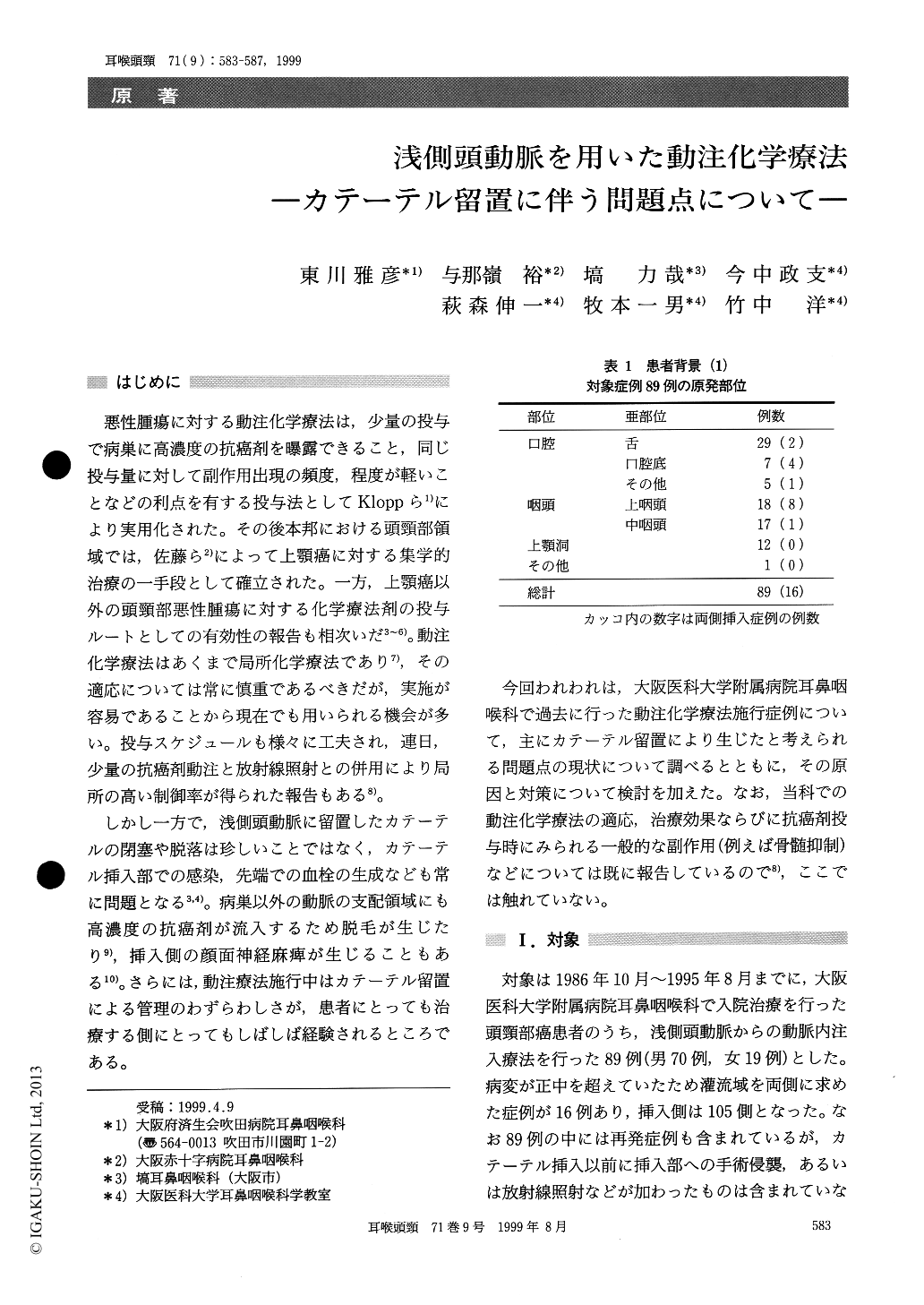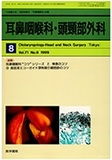Japanese
English
- 有料閲覧
- Abstract 文献概要
- 1ページ目 Look Inside
はじめに
悪性腫瘍に対する動注化学療法は,少量の投与で病巣に高濃度の抗癌剤を曝露できること,同じ投与量に対して副作用出現の頻度,程度が軽いことなどの利点を有する投与法としてKloppら1)により実用化された。その後本邦における頭頸部領域では,佐藤ら2)によって上顎癌に対する集学的治療の一手段として確立された。一方,上顎癌以外の頭頸部悪性腫瘍に対する化学療法剤の投与ルートとしての有効性の報告も相次いだ3〜6)。動注化学療法はあくまで局所化学療法であり7),その適応については常に慎重であるべきだが,実施が容易であることから現在でも用いられる機会が多い。投与スケジュールも様々に工夫され,連日,少量の抗癌剤動注と放射線照射との併用により局所の高い制御率が得られた報告もある8)。
しかし一方で,浅側頭動脈に留置したカテーテルの閉塞や脱落は珍しいことではなく,カテーテル挿入部での感染,先端での血栓の生成なども常に問題となる3,4)。病巣以外の動脈の支配領域にも高濃度の抗癌剤が流入するため脱毛が生じたり9),挿入側の顔面神経麻痺が生じることもある10)。さらには,動注療法施行中はカテーテル留置による管理のわずらわしさが,患者にとっても治療する側にとってもしばしば経験されるところである。
In order to analyse the causes of complications by the catheterization of the superficial temporal artery during arterial infusion chemotherapy, 89 patients (105 sides) with head and neck cancer were reviewed retrospectively. The occlusion of catheter was observed in 13 patients, decanulation in 8, symp-toms related to central nerve system in 2, local inflammation in 3, and pain during infusion of chemotherapeutic agents in 12. All of the program-med and followed therapy were not interrupted by these complications. The incidence of complications was increased by the combined chemotherapy with radiotherapy. Since there would be damages in the inner-membrane of the artery, it should be paid an attention to the degree of complications during arterial infusion chemotherapy. And furthermore, it should be remembered that the patients' mental anguish may be caused by setting the catheter in their temple.

Copyright © 1999, Igaku-Shoin Ltd. All rights reserved.


